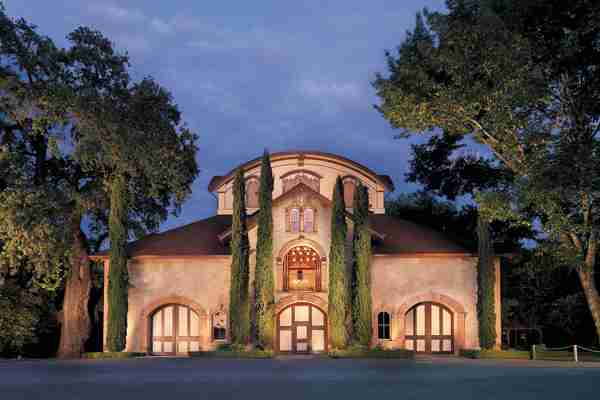Wine Words Wednesday
a collection of Wine Quotes
There’s something magical about wine. It’s not just a drink but a full on sensory experience. For centuries people have been drinking it, enjoying it, and talking / writing about it (like, a lot of writing aout it).
Some talk about how great it tastes, some wax poetecly about its ability to bring people, others just like how it gets them drunk.
Along with our collective love of wine here at Armchair Sommelier we take pleasure in reading the words written and spoken about this magical drink by everyone from ancient greek philosophers to modern fictional characters.
Lets take a journey through some of our favorite quotes about wine! Whether you’re a seasoned wine connoisseur or simply appreciate a good glass of vino, there’s sure to be a quote below that tickles your wine loving fancy. So sit back, pour yourself a glass, and let’s raise a toast to the timeless allure of wine.
This wine is doo good for toast-drinking, my dear. You don’t want to mix emotions up with a wine like that. You loose all the taste.
~ Ernest Hemingway, the Sun Also Rises
Aunt Melly’s quite right. But she was talking about spirits, not wine. You must learn to drink wine like a gentleman won, and there’s no time like the present to learn.
~Rhett Butler, Gone With The Wind
Give me a bowl of wine, In this I bury all unkindness.
~Brutus, Julius Cesar by William Shakespear
Wine is one of the agreeable and essential ingredients of life.
~Julia Child
Every time I open a bottle of wine, its an amazing trip somewhere.
~Josê Andrés
Be careful to trust a person who does not like wine.
~Karl Marx
White wine is like electricity. Red wine looks and tastes like liquified beefsteak.
~James Joyce
Wine is a gateway drug to environmentalism.
~Kathrine Cole
In wine there is wisdome, in beer there is strength, in water there is bacteria.
~Maybe Benjamin Franklin, Maybe Pliny
The best wines are the ones we drink with friends.
~Anonymous
Wine is bottled poetry.
~Robert Lewis Stevenson, Silverado Squatters
Civilization begens with distillation.
~William Faulkner
They are not long, these days of wine and roses: Out of a misty dream our path emerges for a while, then closes within a dream.
~Ernest Dowson
Wine is fun. It has nothing to do with ego.
~Aldo Sohm
Smile, there’s wine!
~Anonymous
Wine is just a conversation starter waiting to happen.
~Anonymous
A bottle of wine begs to be shared. I have never met a miserly wine lover.
~Clifton Fadiman
There are no standards of taste in wine, cigars, poetry, prose, etc. Each man’s own taste is the standard, and a majority vote cannot decide for him or in any clightest degree affect the supremacy of his own standard.
~Mark Twain
Quickly, bring me a beaker of wine, so that I may wet my mind and say something clever.
~Aristophanes
As long as we have wine the holidays will be fine.
~Anonomyous
Wine is a grocery, not a luxury.
~Richard Betts
Whether wine is a nourishment, medicine or poison is a matter of dosage.
~Paracelsus
I never drink water because of the disgusting things that fish do in it.
~WC Fields
I never dine without wine, sir.
~Mark Twain, The Innocents Abroad
I drank a bottle of wine for company. It was Chateau Margaux. It was pleasant to be drinking slowly and to be tasting the wine and to be drinking alone. A bottle of wine was good company.
~Ernest Hemingway, The Sun Also Rises
Every time you open a bottle of champagne, it’s a celebration… Every time you sip it, you’re sipping from all those other celebrations. The joy accumulates over time.
~David Leviathan
In vino veritas. (In wine there is truth.)
~Plato & Others
In Europe then we thought of wine as something as healthy and normal as food and also as a great giver of happiness and well-being and delight. Drinking wine was not a snobbism nor a sign of sophistication no a culd; it was as natural as eating and to me as necessary.
~Ernest Hemingway, A Movable Feast
Either give me more wine or leave me alone.
~Rumi
Give me wine to wash me clean of the weather-stains of cares.
~Hafez as translated by Ralph Waldo Emerson
I drink it when I’m happy and when im sad. Sometimes I drink it when I’m alone. When I have company I consider it obligatory. I trifle with it when I’m not hungary and drink it when I am. Otherwise, I never touch it unless I’m thirsty.
~Lilly Bollinger
There cannot be good living where there is not good drinking. Wine makes daily living easier, less hurried, with fewer tensions and more tolerance. Take counsel in wine, but resolve afterwards in water.
~Benjamin Franklin, Writing as Richard Saunders in Poor Richars’s Almanack
Italian wine is like Italian politics. It’s complicated, barely understood by the rest of the world, and often breaks its own rules. It’s also delicious and diverse.
~Unknown
Anyone who starts analyzing the taste of a rosé in public should be thrown into the pool immediately.
~Jay McInerney
Wine, it’s in my beins and I can’t get it out.
~Burgess Meredith
Wine is sunlight, held together by water.
~Galileo
Wine is one of the most civilized things in the world, and one of the natural things of the world that has been brought to the greatest perfection, and it offers a greater range of enjoyment and appreciation than, possibly, any other purely sensory thing that may be purchased.
~Ernest Hemingway
Champagne’s real place is not at a dinner, but at a ball. A cavalier may appropriately offer, at propitious intervals, a glass now and then to his danceress. There, it takes its fitting rank and position amongst feathers, gauzes, lace, embroidery, ribbons, white satin shoes, and eau de Cologne. It is simply one of the elegant extras of life.
~Charles Dickens
Pinot Noir is like opera. When it’s great, it’s pure seduction, almost hedonistic. There is no middle road.
~Peter Finlayson
First you take a drink, then the drink takes a drink, then the drink takes you.
~F. Scott Fitzgerald
Great wine requires a madman to grow the wine, a wise man to watch over it, a lucid poet to make, and a lover to drink it.
~Salvador Dali









